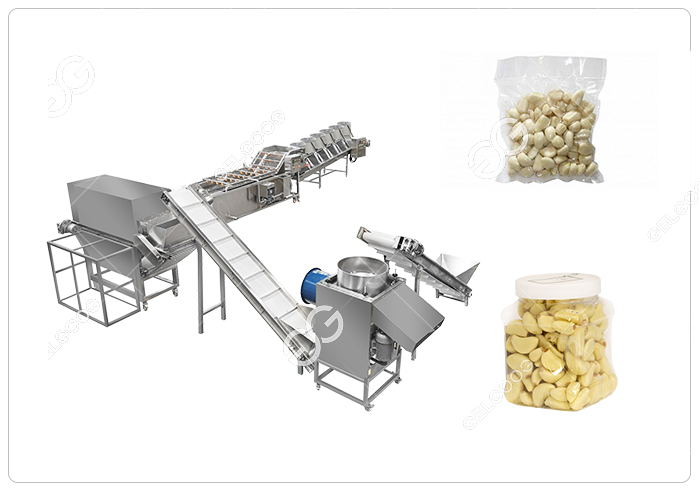Garlic is a versatile ingredient that is used in a wide range of dishes to add flavor and aroma. However, peeling garlic cloves can be a tedious and time-consuming task that can discourage many people from using this flavorful ingredient. In recent years, there have been several projects aimed at developing innovative ways to peel garlic quickly and easily, and one such project report has garnered attention for its promising results.
The garlic peeling project report, conducted by a team of researchers, sought to develop a garlic peeling production line that could peel garlic cloves efficiently and with minimal waste. The project aimed to address the challenges faced by garlic farmers and processors who struggle to meet the demand for peeled garlic in the food industry. The project team developed a prototype machine that could peel garlic at a rate of 60 cloves per minute, significantly reducing the time and labor required to peel garlic manually.
The machine developed by the project team works by using a combination of mechanical and pneumatic technologies. The garlic cloves are first loaded into a hopper, which feeds them onto a conveyor belt. The cloves then pass through a series of rollers that apply pressure to loosen the skins. The skins are then removed by a series of air jets that blow them away, leaving the peeled garlic cloves behind. The peeled cloves are then collected in a tray, ready for use in cooking or further processing.
The project report highlights several key advantages of the garlic peeling machine over traditional manual methods. Firstly, the machine can peel garlic quickly and efficiently, reducing the time and labor required to peel garlic by hand. This makes it an attractive option for garlic farmers and processors who need to peel large volumes of garlic to meet market demand. Secondly, the machine can peel garlic without damaging the cloves, ensuring that they retain their flavor and quality. This is particularly important for garlic processors who need to maintain high-quality standards for their products. Finally, the machine can reduce waste by up to 20%, as it can recover garlic cloves that would otherwise be discarded during manual peeling.

The project report also highlights some of the challenges faced by the project team during the development of the garlic peeling machine. One of the main challenges was developing a system that could accurately detect and remove the garlic skins without damaging the cloves. This required careful calibration of the air jets and rollers to ensure that the skins were removed without exerting too much pressure on the garlic cloves. Another challenge was designing a system that could handle garlic cloves of different sizes and shapes. The team addressed this by developing a flexible conveyor belt that could adjust to accommodate different garlic sizes.
Overall, the garlic peeling project report demonstrates the potential of innovative technology to solve real-world problems faced by the food industry. By developing a machine that can peel garlic quickly and efficiently, the project team has addressed a major challenge faced by garlic farmers and processors. The machine has the potential to reduce labor costs, increase efficiency, and improve the quality of peeled garlic products. It is also an environmentally friendly solution, as it can reduce waste by recovering garlic cloves that would otherwise be discarded.
The garlic peeling project report is an example of how innovation can drive progress in the food industry. By using technology to solve problems, we can create more sustainable and efficient systems that benefit farmers, processors, and consumers alike. As the demand for high-quality garlic products continues to grow, it is important that we continue to invest in research and development to improve our methods of production and processing.
In conclusion, the garlic peeling project report highlights the potential of innovative technology to revolutionize the way we produce and process garlic. By developing a machine that can peel garlic quickly and efficiently, the project team has addressed a major challenge faced by the food industry. The machine has the potential to increase efficiency, reduce waste, and improve the quality of peeled garlic products. As we continue to explore new ways to